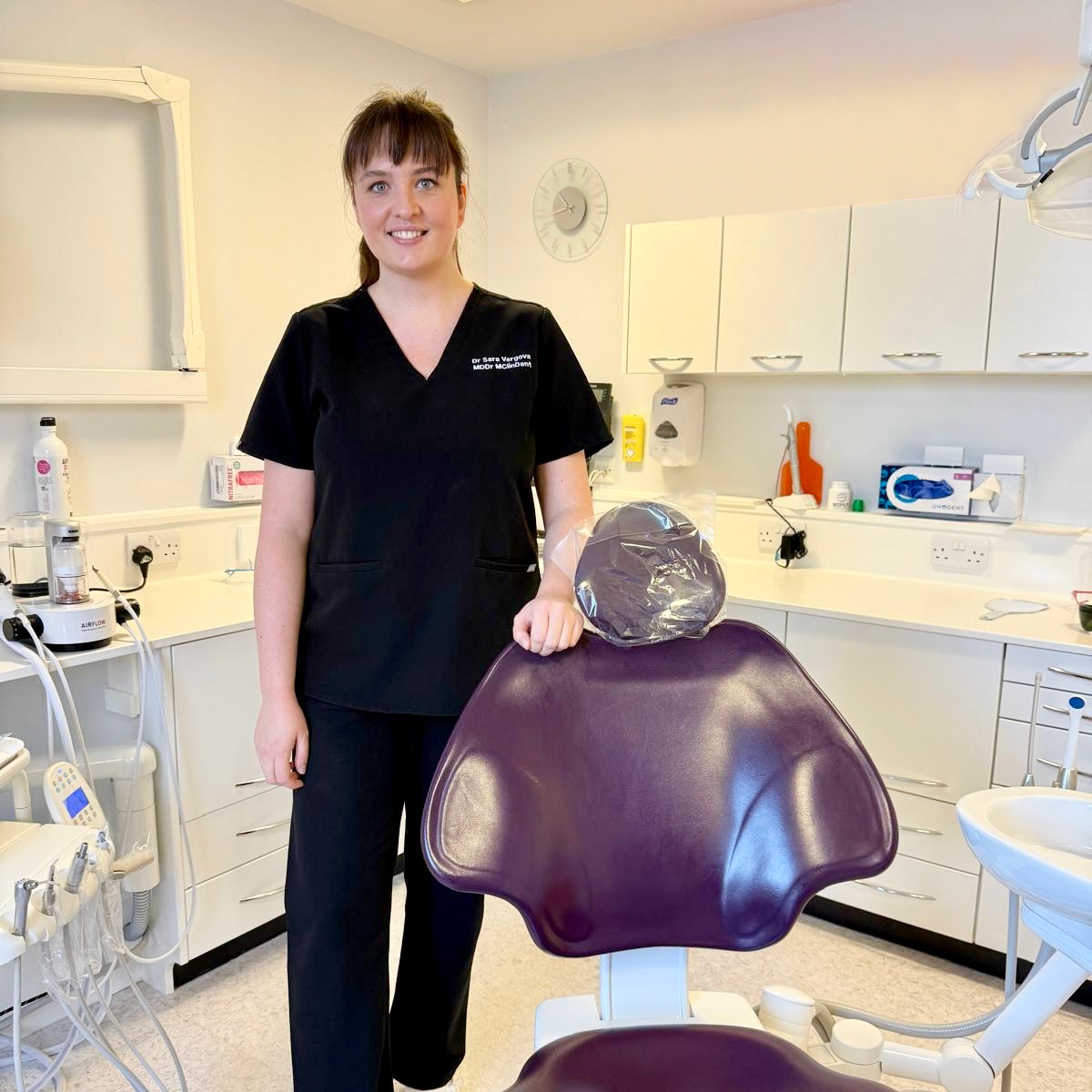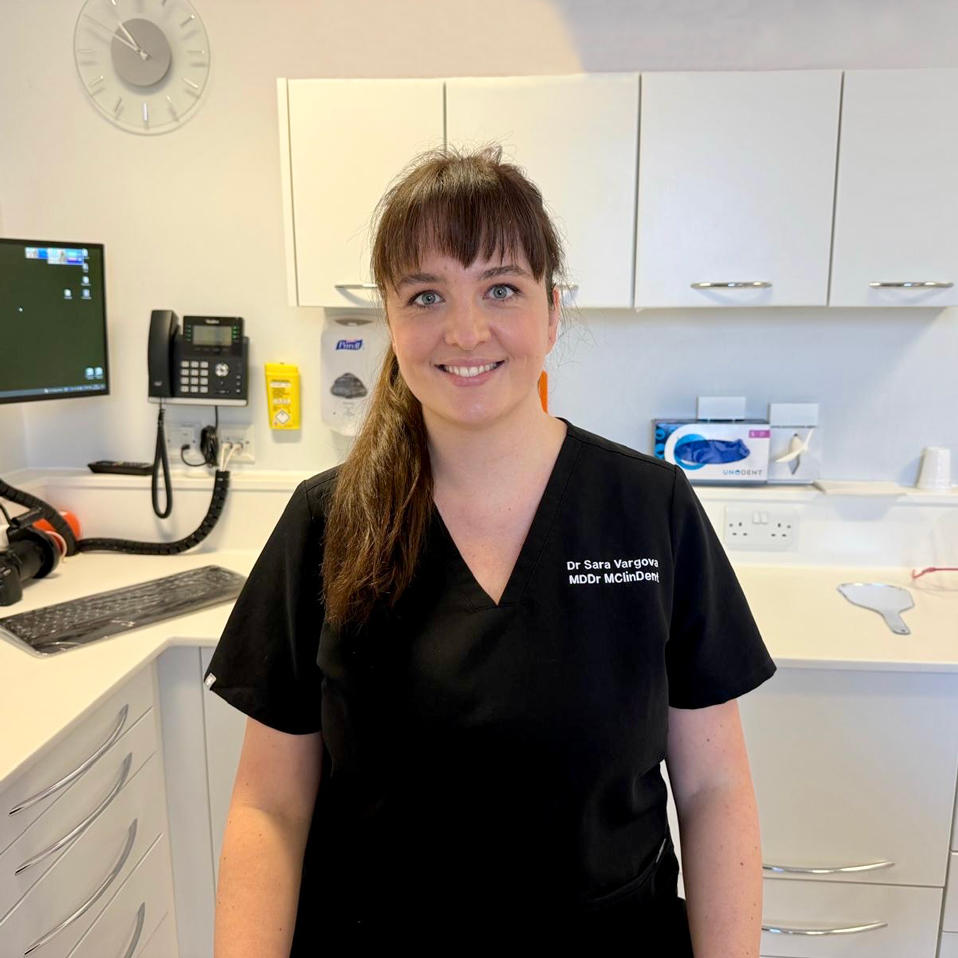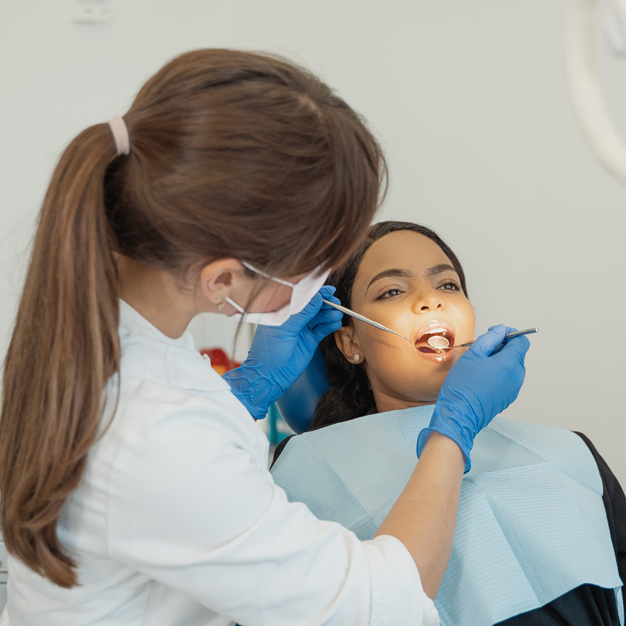Periodontal treatment
What is Periodontal Disease?
Periodontal disease affects the gums, bone and other supporting tissues around teeth. While many people experience occasional gum inflammation, approximately 10% of the population appear to suffer from the more severe forms of the disease which cause loss of supporting bone and increased risk of tooth loss. It is caused by bacterial accumulation on teeth.

Sara Vargova at Clinic 95 is our leader in Periodontics, she will guide you from diagnosis, treatment planning and coaching to restoration. Sara also works closely with Ben and Henry our hygiene therapists to ensure your optimal oral health will be achieved. Read more about Sara here
Who suffers from Periodontal Disease?
Some people are genetically more susceptible to the effects of plaque, while three major factors - family history, stress and smoking – are believed to contribute significantly, quitting smoking is crucial in minimizing the risk. Certain general diseases such as diabetes may also make an individual more susceptible.
What are the signs of Periodontal Disease?
The signs and symptoms of periodontal disease vary significantly but may include gums that bleed when brushing, together with signs of more advanced disease such as tooth movement or shifting. However, it is possible to have the disease without noticing these signs. It is essential to see your dentist regularly so that special assessment techniques, sometimes including x-rays, can be carried out as part of your routine dental examinations.

Periodontal treatment
The overall goal of modern periodontal treatment is to achieve and then maintain acceptable gum health and to prevent the disease from progressing.
After initial stabilisation of the condition has been achieved, the aim is for the patient to be able to control their predisposition to disease through a life-long home-care programme with regular monitoring and maintenance at their dental practice.
What are these conditions and who is at risk from them?
Gingivitis
The majority of people suffer from a mild form of gum disease (gingivitis) that can lead to bleeding gums and often the plaque causing it will harden on the teeth forming a calcified deposit of “tartar” (calculus). Routine appointments with a dental hygienist are aimed at the treatment and ongoing prevention of these reversible problems, which are caused by plaque which is totally accessible to cleaning at home.
Symptoms may not appear until an advanced stage of the disease. However, warning signs of gum disease include the following:
- Red, swollen or tender gums or other pain in your mouth
- Bleeding while brushing, flossing, or eating hard food
- Gums that are receding or pulling away from the teeth, causing the teeth to look longer than before
- Loose or separating teeth
- Pus between your gums and teeth
- Persistent bad breath
- A change in the way your teeth fit together when you bite
- A change in the fit of partial dentures
Periodontitis
Some people are genetically more susceptible to the effects of plaque and irreversible damage may be caused to the attachment between the gum and the roots of the teeth (periodontitis). This can result in the formation of gaps between the gums and the teeth (pockets) in which more plaque can collect and thus continue the disease process. As these pockets deepen, the plaque under the gums becomes more inaccessible to cleaning, more extensive and more toxic. This leads to increasing damage to the supporting bone around the roots of the teeth. The bone is gradually destroyed and in the worst cases the teeth may eventually become loose and even be lost.
Periodontitis is the 6th most prevalent disease throughout the world and significantly linked to general well-being and longevity. It is often ‘silent’ and can be present for decades without diagnosis and treatment.

Increased risk factors for periodontitis
Existing susceptibility to periodontal attachment loss can be modified by secondary and environmental risk factors such as:
- Smoking
- Type I and Type II diabetes (particularly type II when inadequately controlled)
- Conditions and/or medication which interfere with a patient’s ability to perform acceptable plaque control or reduce their body defences against infection.
- Psychosocial factors and the presence of certain putative periodontal pathogens in periodontal pockets.
- Stress
- Excessive biting forces
The initial periodontal consultation - what to expect
This will involve a very detailed analysis of the patient's gum problems looking at each individual tooth, the extent of the disease, the long term prognosis and treatment required. It will include a detailed periodontal chart, which involves measuring the position of the gums determining whether or not spaces (pockets) have opened up between the gums and the teeth. The amount of bleeding, gum recession and tooth mobility will also be assessed. X-rays if indicated will be taken.
(no treatment will be carried out at the consultation visit).

Periodontal treatment costs
- A deposit of 50% is paid in advance of each treatment and review appointment, although for the initial periodontal consultation the full fee is payable at the time of booking.
- Initial Periodontal Consultation: £195
Initial treatment
The initial non-surgical periodontal treatment aims to remove and disrupt the bacteria from the clinical crowns and root surfaces using instruments to prevent the disease from progressing. It may include several appointments depending on the severity and extent of the disease.
Fees:
- With hygienist from £250 per session
- With dentist with special interest in Periodontology from £530 per session
Treatment of the disease can be treated with hygienist, Dentist with Special Interest in Periodontology or Periodontist depending on:
- The stage and grade of the disease and complexity of treatment required
- The knowledge, experience and training of oral healthcare professionals to manage patients with a range of periodontal conditions.
- The presence of genetic and lifestyle/behavioural risk factors.
Re-assessment
After the initial course of treatment, you will be reassessed in approximately two to three months. At that stage a decision can be made whether further treatment is necessary. It further treatment is indicated, treatment options to help resolve the disease may include further cleaning below the gum line, gum surgery or supportive periodontal treatment (maintenance) with the hygienist.
Fee: £125 (no treatment is carried out on this appointment)
Benefits of periodontal treatment
The aim of the treatment for gum disease is to stop or prevent the disease from progressing. It can help to improve the control of your blood sugar levels meaning it can help treat diabetes. Treatment also helps reduce bleeding gums, bad taste and bad breath. Without treatment there is a risk of disease progression and tooth or teeth being lost.


